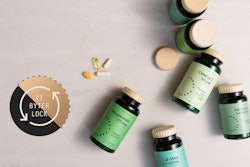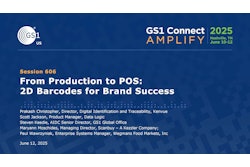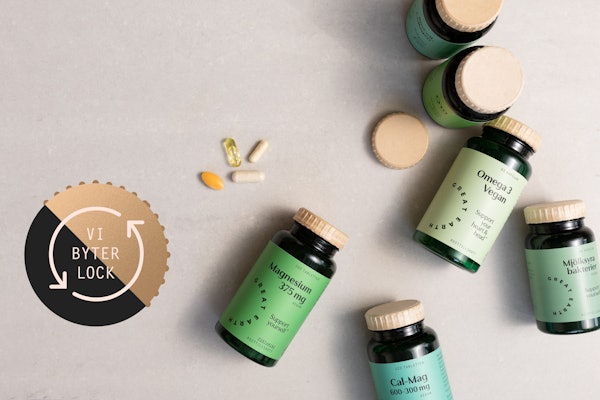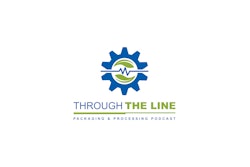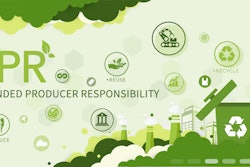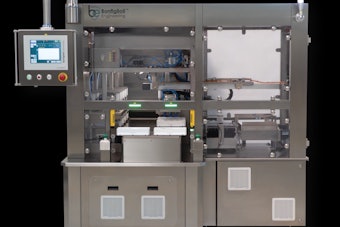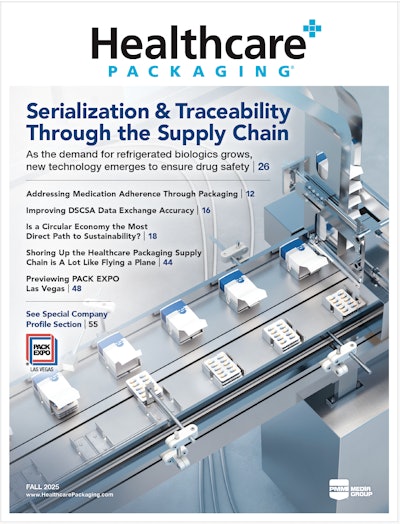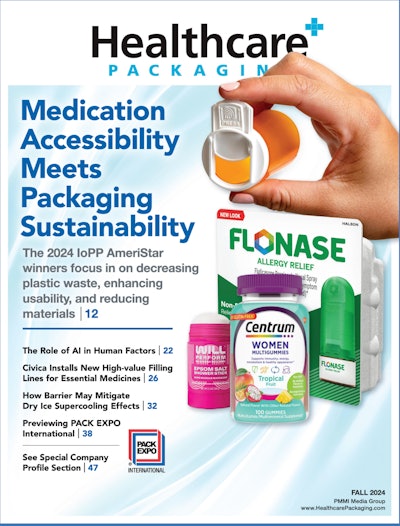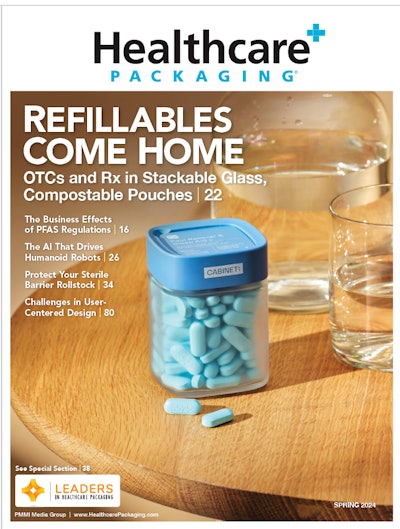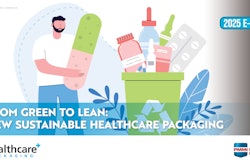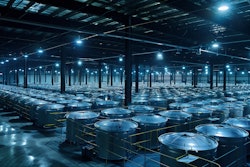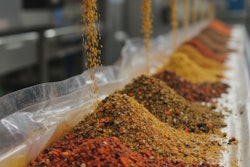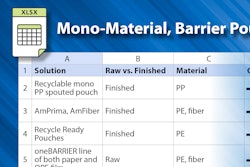
Key Takeaways:
- Graasi is about proving that wellness and manufacturing could coexist — sustainably, locally, and intelligently.
- This includes the use of post-consumer resin (PCR) and what LaCorata calls a “society of cycles” model — materials that can reenter the recycling stream multiple times without degradation.
- The bottles are free of coatings or additives that could complicate recycling, and the labels communicate ingredients and claims with clarity.
When Chris LaCorata talks about the health of the nation, he doesn’t just mean diet or exercise. He’s talking about the health of its factories, its small towns, and its manufacturing backbone. After nearly four decades in manufacturing, LaCorata saw firsthand how plant closures rippled through communities — shuttering jobs, hollowing out local economies, and sending production overseas.
So when he launched Graasi, the first certified organic barley water brand in the U.S., it wasn’t only about creating a functional beverage. It was about proving that wellness and manufacturing could coexist — sustainably, locally, and intelligently.
“Manufacturing matters,” LaCorata says. “It matters to national security, and it matters to the communities that surround those factories. Every local facility has a sphere of influence that’s far-reaching.”
Graasi’s journey — from a small-town vision to a fully realized, U.S.-based production model — offers a roadmap for nutraceutical and pharmaceutical brands that see packaging not as an afterthought, but as the engine of product integrity, consumer trust, and operational resilience.
A Manufacturing Mindset for Modern Wellness
Before founding Graasi in 2017, LaCorata spent 37 years managing and optimizing manufacturing networks across the U.S. His timing coincided with the massive outsourcing wave of the 1990s and 2000s, when more than 70,000 American factories closed their doors. The experience shaped his mission.
“I had a front-row seat to all of it,” he recalls. “Talent leaves when there are no jobs. Services drop in the local community, and then you’ve got issues with addiction, poverty — the ripple effects are enormous. When I had the chance to hang up my corporate hat, I decided to do something about it.”
That “something” became a new kind of functional (nutraceutical) beverage company — one that treats production, packaging, and equipment investment as vital components of wellness itself. LaCorata returned to his wife’s hometown in Pennsylvania, worked with local economic development teams, and envisioned a vertically integrated processing facility that could employ local workers and partner with nearby suppliers.
When the pandemic derailed those early plans, Graasi pivoted — not away from manufacturing, but toward a leaner, contract-manufactured model rooted in the same principles of domestic sourcing and sustainable packaging.
Listen below to a podcast interview between Healthcare Packaging editor, Joe Darrah and LaCorata.
Inside the Line: Bottling with Purpose
Graasi’s products are bottled in a repurposed Pepsi-Cola plant in southern Virginia — a site that perfectly reflects LaCorata’s belief in revitalizing existing infrastructure. The facility, now an organic-certified operation, blends small-town ingenuity with high-speed automation.
The line begins at the tank farm, where 1,000- to 2,000-gallon stainless-steel tanks prepare the bulk formulation. From there, product moves into the filling room, the heart of any beverage line.
“If you walk into the filling room, you’ll see empty bottles coming in on one side and full bottles going out the other,” LaCorata says. “The fillers are circular in nature because of the speed and engineering — you can run at a much higher speed and get more throughput that way.”
Circular, rotary filling systems are prized in both beverage and pharmaceutical production for their precision and efficiency. The design allows Graasi to maintain consistent fill volumes, a critical factor for compliance and consumer trust — and one familiar to any pharma manufacturer balancing accuracy with speed.
Once filled, bottles move directly to a capping station, where torque-controlled cappers ensure seal integrity while avoiding the deformation risks associated with lightweight PET bottles.
From there, the bottles feed into the labeling system, which applies a full-wrap shrink-sleeve label. The labels pass through a heat tunnel that conforms the film seamlessly to the bottle’s contour, giving the product a polished, uniform appearance while maintaining tight tolerance at high speeds.
The end-of-line packaging mirrors the efficiency of the upstream systems. Twelve bottles are dropped into corrugated trays, wrapped in film, and passed through another heat tunnel for shrink sealing. Finally, a robotic palletizer stacks the cases for warehouse distribution — the last touchpoint before the product heads to retailers.
The result is a fully integrated operation where every piece of equipment — from the fillers to the palletizers — contributes to efficiency, hygiene, and sustainability.
Packaging as a Promise
For LaCorata, packaging isn’t just a vehicle for his beverage — it’s an extension of the brand’s philosophy of transparency and accountability. Every component, from the bottle resin to the label adhesive, is selected for recyclability, safety, and traceability.
Graasi’s packaging suppliers must meet the same high bar. “We wanted to make sure every supplier we deal with had a sustainability program,” LaCorata says. “Especially those producing our bottles, caps, and corrugate. We want to see active progress — real innovation year after year.”
That innovation includes the use of post-consumer resin (PCR) and what LaCorata calls a “society of cycles” model — materials that can reenter the recycling stream multiple times without degradation. The goal is to reduce dependence on virgin plastics while ensuring shelf stability and supply chain performance.
On the design side, Graasi prioritizes clean design and clean labeling. The bottles are free of coatings or additives that could complicate recycling, and the labels communicate ingredients and claims with clarity — a growing demand among nutraceutical and OTC pharmaceutical consumers alike.
“Clean design is about more than aesthetics,” LaCorata explains. “It’s about making sure your packaging protects the product safely through the supply chain — and that it has a life after the consumer uses it. That’s responsible design.”
Sustainability: From Soil to Shelf
Graasi’s sustainability commitment extends beyond packaging. From day one, the company pursued USDA organic certification, a process that scrutinizes every step of production — including packaging materials.
Organic certification, LaCorata explains, functions like a chain of custody. Each partner in the process — from the growers to the bottlers — must meet a higher standard for traceability, sanitation, and environmental responsibility.
“We like that the organic certification is more rigorous,” he says. “It gives consumers a level of trust that’s hard to achieve otherwise. They know what’s in the bottle because what we say is on the label is actually in the bottle.”
That rigor mirrors the expectations of pharmaceutical manufacturers, where validation, documentation, and supplier transparency are cornerstones of compliance. For nutraceutical brands, adopting similar standards is increasingly seen not just as good practice, but as good business.
Automation and Adaptability
Though Graasi currently works with a contract manufacturer, LaCorata’s long-term goal is to build a vertically integrated, automated production facility — ideally in an opportunity zone to maximize community impact.
His vision mirrors the Industry 4.0 trends transforming both beverage and pharmaceutical packaging: smart sensors, data-driven quality control, and adaptive systems that maintain consistency while optimizing energy and material use.
The company already partners with equipment suppliers that share this future-forward mindset. Servo-driven filling and capping systems reduce mechanical wear and energy consumption, while digital controls enable recipe-based changeovers — a capability increasingly critical for flexible, multi-SKU production environments.
In the future, Graasi expects to integrate IoT-enabled monitoring and real-time data collection for predictive maintenance, OEE tracking, and electronic batch record validation. “The same technologies that drive pharmaceutical precision are starting to become standard in beverage,” LaCorata notes. “That’s where efficiency and trust meet.”
The Economics of Reshoring
Reshoring production, LaCorata acknowledges, isn’t always the easiest path — but it’s one that’s gaining momentum across the nutraceutical and life sciences sectors.
The pandemic made clear how fragile global supply chains can be. For Graasi, keeping production domestic has meant shorter lead times, stronger quality control, and a clearer sustainability story — benefits that resonate with both retailers and consumers.
“Manufacturing within our borders gives us control,” LaCorata says. “We know our partners, we know our suppliers, and we know their processes. That’s hard to replicate when you’re sourcing overseas.”
By maintaining a closed-loop supply chain, Graasi can respond faster to shifts in demand, regulatory changes, or sustainability requirements. It also builds resilience — a priority for any pharmaceutical or nutraceutical company navigating unpredictable markets.
Where Wellness Meets Manufacturing
At its core, Graasi’s story is about more than functional hydration and wellness. It’s about using packaging and manufacturing as tools to rebuild trust in the products people consume — and in the systems that produce them.
The lines between food, nutrition, and medicine are indeed blurring, and that makes the role of equipment design and packaging performance even more crucial. As functional beverages move closer to nutraceutical and pharmaceutical territory, the expectations for safety, cleanliness, and traceability will continue to rise. Companies like Graasi are proving that meeting those standards isn’t just possible — it’s profitable.
“Functional hydration is really just hydration with benefits,” LaCorata says. “But behind every bottle is an operation built on purpose — sustainable packaging, responsible production, and manufacturing that makes a difference.”
A Model for the Future
Graasi’s approach offers a template for any brand that sees manufacturing not just as a necessity, but as a competitive advantage. By aligning packaging choices with sustainability goals, equipment investments with flexibility, and production strategy with community revitalization, the company demonstrates how manufacturing can serve both people and planet.
For nutraceutical and pharmaceutical leaders, it’s a timely message: innovation doesn’t just happen in the lab — it happens on the line.



